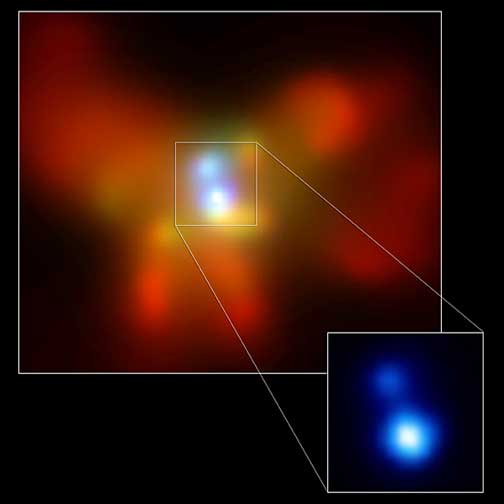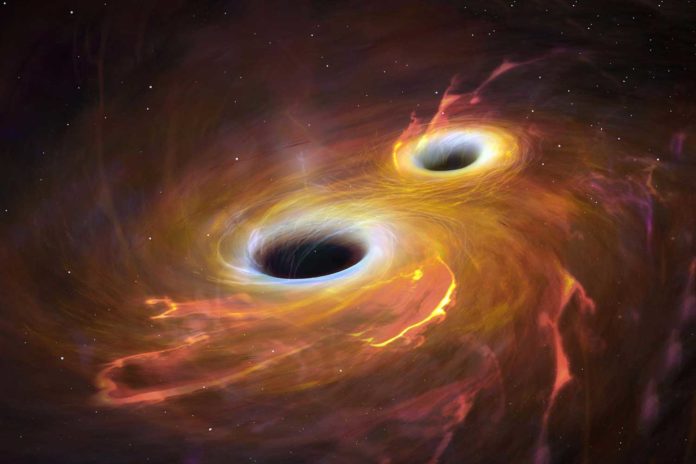In a recently shared image by NASA, a galaxy appearing called NGC 6240 contains two supermassive black holes in the process of merging. The image consists of new X-ray data from Chandra (shown in red, orange, and yellow) that has been combined with an optical image from the Hubble Space Telescope originally released in 2008.
These merging black holes are approximately 3,000 light-years apart and are seen as the bright point-like sources in the middle of the image. These black holes are in such proximity because they are spiraling toward each other — a process that began about 30 million years ago.
In 2020, based on Chandra data, the discovery of two merging black holes was announced. Since 2002, there has been intense interest in follow-up observations of NGC 6240 by Chandra and other telescopes.

NGC 6240 is a nearby ultraluminous infrared galaxy (ULIRG) in the constellation Ophiuchus. The galaxy is the remnant of a merger between three smaller galaxies.
According to scientists, the merging process might have begun about 30 million years ago. It is estimated that the two black holes will eventually drift together and merge into a larger black hole some tens or hundreds of millions of years from now.
It is thought that pairs of massive black holes can explain some of the unusual behavior seen by rapidly growing supermassive black holes, such as the distortion and bending seen in the powerful jets they produce. Also, pairs of massive black holes in the process of merging are expected to be the most potent sources of gravitational waves in the Universe.
